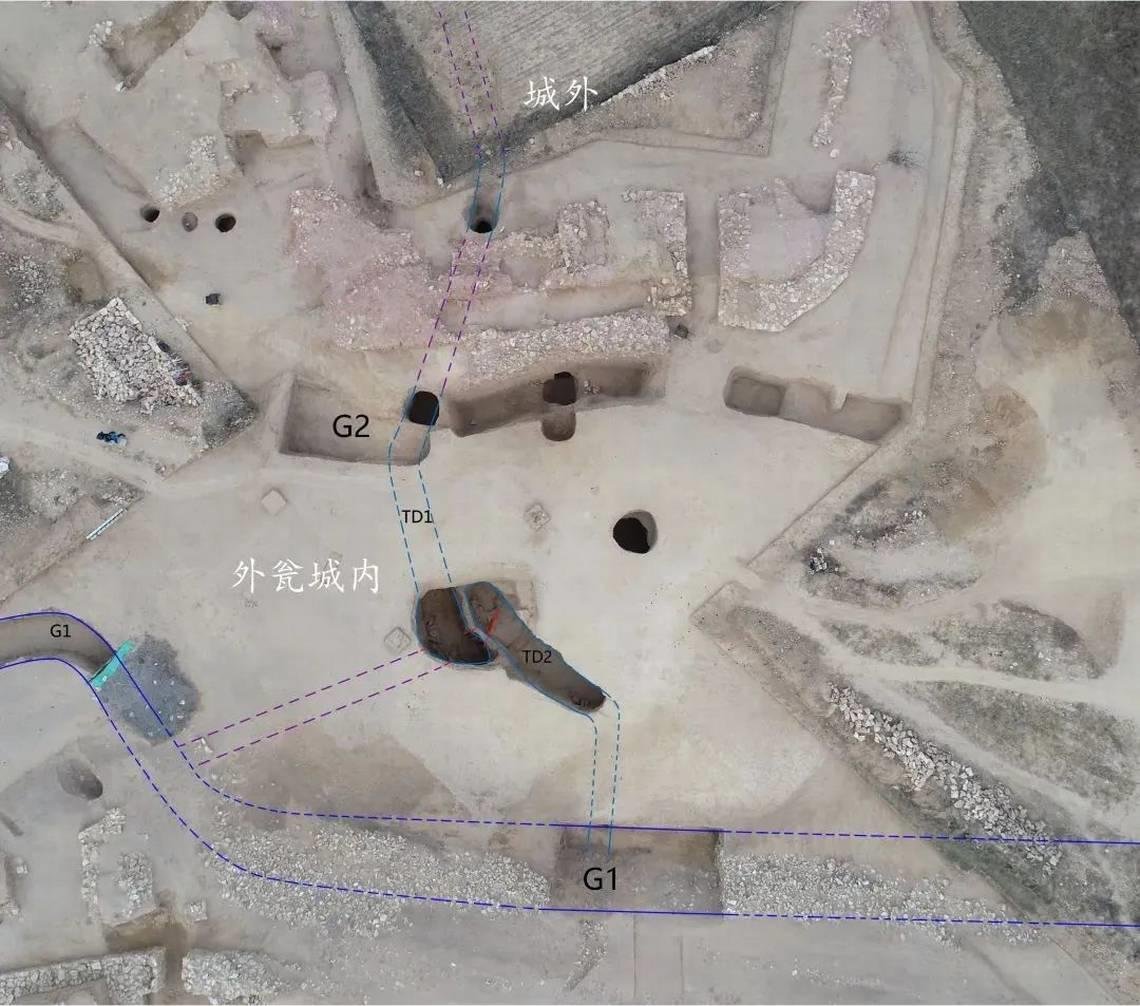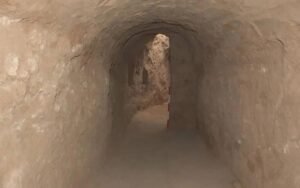Anthropology
Related: About this forumSecret Tunnels Discovered Under a 4,300-Year-Old City in China
Story by Ben Campbell • 2mo
- click link for image -
https://tinyurl.com/3z5r563e
©indy100.com/Facebook/indy100.com/Facebook
Archaeologists reveal they’ve made a startling discovery during excavations that have been taking place at the ancient Chinese city of Houchengzui in the nation's northern region.
At the site, which dates back over 4,000 years, researchers discovered a series of artificial underground tunnels that run beneath the stone city.
. . .

Ancient Stone City of Houchengzui
©indy100.com/Facebook
The city of Houchengzui is an archaeological site found in the Qingshuihe county of Hohhot, which currently serves as the capital of the Inner Mongolia autonomous region.
It was first discovered in the 1980s, yet major excavation work didn't begin until 2019.
. . .

Four Thousand-Year-Old Impenetrable Fortress
©Freepik
Today, the Stone City of Houchengzui is little more than a ruin and a shadow of its former self.
However, archaeologists agree that over four thousand years ago, it would have been an impenetrable fortress. This is due to the impressive defensive features implemented by its former inhabitants.
. . .

Civilizations of the Yellow River
©fading/Wikipedia
Archaeologists initially wrongly ascribed the construction of the Shimao site to the Ming Dynasty, who ruled over China from 1368-1644.
Researchers now know it goes back over 3,500 years before this period. While further excavations need to be carried out, archaeologists are hopeful the sites can help them better understand the cultures that arose along China’s Yellow River.
More:
https://www.msn.com/en-us/news/world/secret-tunnels-discovered-under-a-4-300-year-old-city-in-china/ss-BB1hVXJD
Judi Lynn
(162,491 posts)by Dario Radley December 29, 2023
Archaeologists conducting excavations at Houchengzui Stone City, situated in the Inner Mongolia Autonomous Region, have uncovered a network of ancient tunnels that date back 4,300 to 4,500 years

A map of the hidden tunnels, the blue dotted lines, labeled TD1 and TD2.
Credit: Chinese Academy of Social Sciences / China Archaeology Network
This sprawling archaeological site, covering approximately 1.38 million square meters, is located on the north bank of the Hun River in Qingshuihe County, Inner Mongolia. The city’s history and significance have been confirmed through meticulous research, making it the highest-ranked, largest in scale, and most tightly defended early Longshan period stone city discovered in Inner Mongolia to date.
The latest excavation efforts, spearheaded by the Institute of Archaeology, Chinese Academy of Social Sciences (CASS), have brought to light a complex triple defense system and an intricate network of underground tunnels.
The discovery was announced by the Institute of Archaeology in collaboration with the Inner Mongolia Autonomous Region Institute of Cultural Relics and Archaeology and the China Archaeology Network.

An entrance to one of the hidden tunnels.
Credit: Chinese Academy of Social Sciences / China Archaeology Network

A view inside one of the passageways.
Credit: Chinese Academy of Social Sciences / China Archaeology Network
The Houchengzui Stone City, shaped like an ellipse, comprises an inner city, an outer city, and a walled gatehouse, extending about 1200 meters in length and 1150 meters in width. The city’s triple defense system revealed through five years of archaeological excavations, consists of the main city wall, main city gate, horse faces, gatehouse walls, terraces, and moats. This elaborate defense structure is categorized into the “inner gatehouse” and “outer gatehouse.”
More:
https://archaeologymag.com/2023/12/underground-tunnels-in-ancient-stone-city-in-china/
Judi Lynn
(162,491 posts)
by Guillermo Carvajal
December 31, 2023
Recent archaeological excavations at the site of the ancient Stone City of Houchongzhai, located in Qingshuihe County in the Inner Mongolia Autonomous Region of China, have revealed significant new details about its sophisticated three-level defensive system.
Dating between 4300 and 4500 BC, during the historical period known as Early Longshan, the city of Houchongzhai was occupied by a prosperous Stone Age civilization. With an area of 138 hectares, it is the largest and best-fortified city discovered from that period in all of Inner Mongolia.
The massive stone walls, forming an elliptical perimeter of approximately 1200 by 1150 meters, were the main findings of the initial excavations in the 1990s.

photo Institute of Archaeology of the Chinese Academy of Sciences
However, it wasn’t until 2019 that archaeologists began to uncover the complexity of its defenses through a five-year excavation plan.
To date, three concentric lines of walls protecting the city from potential attacks have been identified. Inside is the main wall surrounding the walled inner city.
More:
https://www.labrujulaverde.com/en/2023/12/complex-network-of-tunnels-dating-back-6000-years-discovered-in-chinas-ancient-houchongzhai-stone-town/
BoRaGard
(2,994 posts)